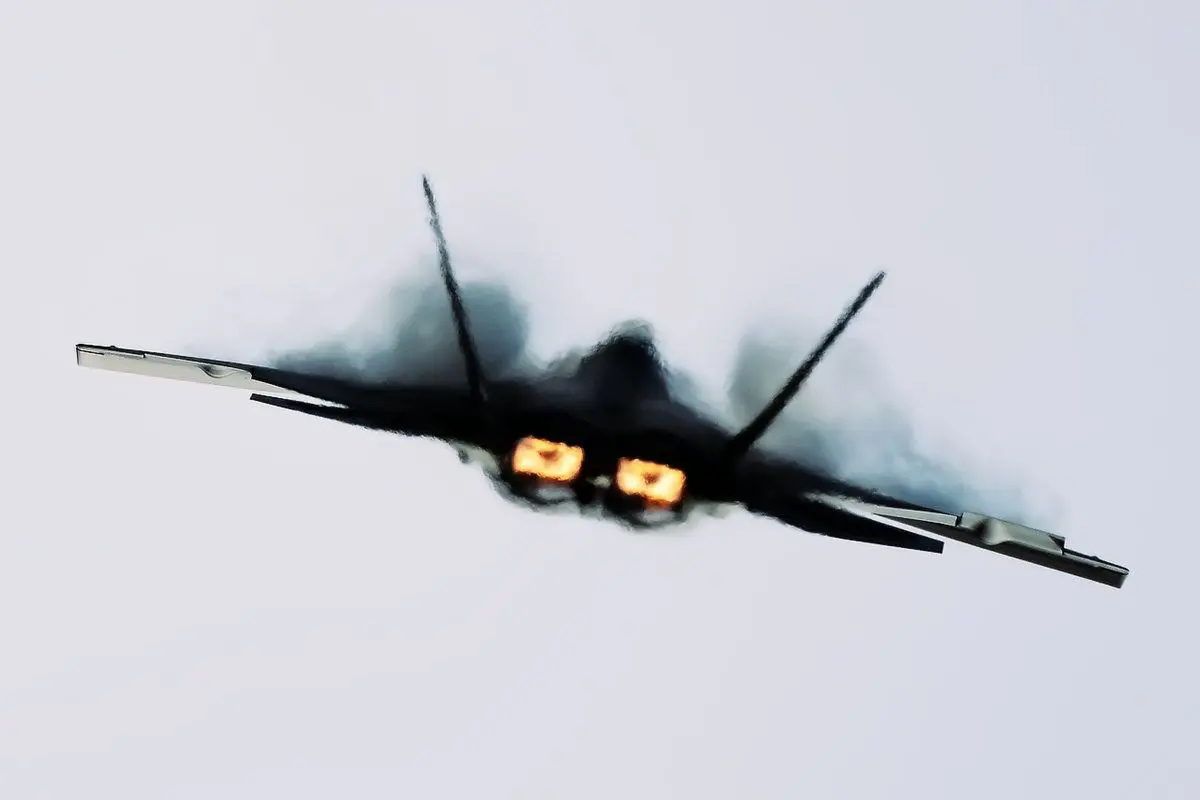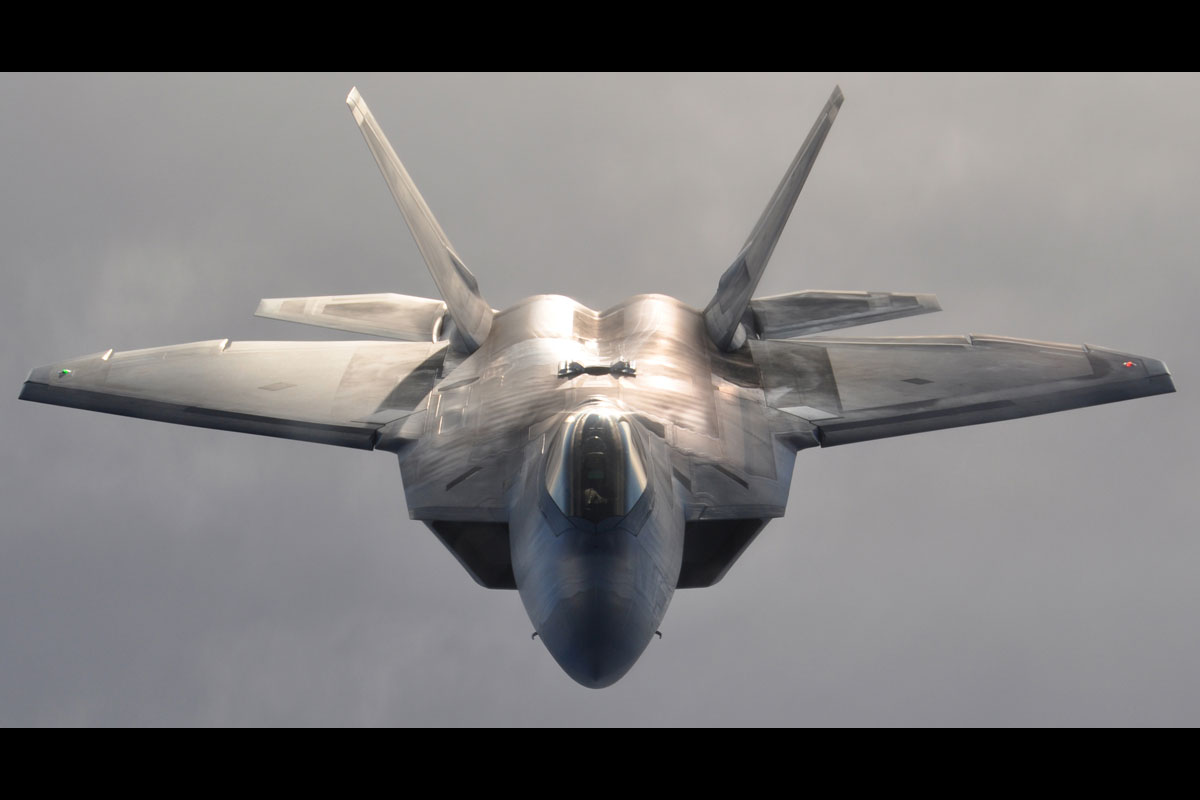F22 Raptor Speed - The F-22 Raptor is consistently hailed as the best fighter jet in the world. The F-22 Raptor's top speed is impressive, but there's more to this super jet than high speed without using an afterburner. Find out what makes this fighter jet the best in its class and how it's kept airborne thanks to the inventors at Lockheed Martin.
The F-22 Raptor's top speed reaches 1,500 mph and is the first aircraft to reach such a speed without using an afterburner. The F-22 Raptor can fly up to 65,000 feet in the air. At this height, it can reach a very high speed and run to these speeds faster than at sea level.
F22 Raptor Speed

One of the advantages of the F-22 Raptor comes from its aerodynamic design and advanced internal technology. But let's not hide from ourselves; to get to that speed, especially for something that weighs 43,430 pounds, you're going to need a lot of fuel.
F 22 Vs F 35: See The Major Differences In The Raptor Vs Lightning
By burning more fuel, a fighter jet can run insanely fast and rely on lift to sustain itself for long periods of time. The F-22 Raptor is fast but stable in short bursts, allowing it to fly only 1,864 miles before needing to refuel due to its high fuel capacity and speed.
If you're looking for the world's top 10 fighter jets, chances are you'll find the F-22 Raptor and the F-35 Lightning II on the list. Both of these fighter jets are extremely lethal and feature the highest level of capability and technology you would expect from Lockheed Martin. Here are some of the main things that set them apart:
Both are worthy enemies in heaven and help keep America safe. The F-22 Raptor is sold only in the United States, while the F-35 Lightning II has several countries licensed to purchase the aircraft due to its advanced technology.
If you haven't already, you'll want to make sure you listen to the latest chapter of
The F 22 Raptor Cost Is Putting The Plane's Production In Jeopardy
And arrive early. Before the screening of Top Gun: Maverick, the US Air Force showed the F-22 Raptor in its recruitment video shown on the big screen. It's a great way to see the F-22 Raptor's super speed and controls that make this fighter so intimidating.
Buddy Blouin is a writer who loves to create through the written word. Outside of computer science research and blogging, she enjoys crafting, cooking, and enjoying Beautiful Games. United States Air Force (USAF). Thanks to the USAF's Advanced Tactical Fighter (ATF) program, the aircraft is designed to be an air-to-air fighter, but also has ground attack, electronic warfare, and intelligence capabilities. The main contractor, Lockheed Martin, built most of the F-22 airframe and equipment and did the final assembly, while Boeing provided the wings, aft fuselage, avionics and training systems.
The aircraft first flew in 1997 and was variously designated the F-22 and F/A-22 before entering service in December 2005 as the F-22A. Although the USAF originally planned to purchase 750 ATFs, the program was reduced to 187 operational aircraft in 2009 due to high costs, lack of air travel and aircraft due to focus on counter-terrorist operations during production, export. interception and development of the low-cost and maneuverable F-35;

Although it faced a long development and initial problems, the F-22 has become an important part of the USAF's military technology. The integration of stealth fighters, aircraft systems, and mission systems enabled unprecedented combat capabilities and set the benchmark for its generation.
The Two Things Air Force F 22 Raptors Can't Defeat
The F-22 is expected to enter service in 2030 and eventually be replaced by the USAF's Next Generation Air Dominance (NGAD) fighter jet.
In 1981, the US Air Force recognized the need for an Advanced Tactical Fighter (ATF) to replace the F-15 Eagle and the F-16 Fighting Falcon. Codenamed "Sior Sky," the anti-aircraft program was affected by threats from around the world, including new Soviet defense systems and increased Sukhoi Su-27 "Flanker" and Mikoyan MiG- 29 "Fulcrum" fleets. airplane.
It would benefit from new technologies in close combat design, including composite materials, light alloys, advanced avionics and flight control systems, more powerful propulsion systems, and above all, stealth technology. In 1983, ATF's development unit became the System Program Office (SPO) and managed the program at Wright-Patterson Air Force Base. The Demonstration and Validation Request for Proposals (RFP) (Dem/Val) was issued in September 1985, with requirements emphasizing stealth and supercruise. Because of the large investment required to develop the technology needed to achieve operational goals, collaboration between companies has been encouraged. Of the seven funding companies,
Lockheed and Northrop were selected on October 31, 1986. Lockheed, through its Skunk Works division, partnered with Boeing and General Dynamics while Northrop partnered with McDonnell Douglas, and the two contractor groups formed a 50-month Dem/Val phase, which culminated in . flight testing of two technical prototypes, respectively the YF-22 and YF-23. At the same time, Pratt & Whitney and General Electric were awarded contracts to manufacture the YF119 and YF120 engines, respectively, in the ATF competition.
China's J 20 Challenges F 22 Raptors Might! Will Speed & Stealth Beat Range & Radar In A Possible 5th Gen Fighter War?
Dem/Val focuses on mechanical engineering, technology development plans and risk reduction in scheduled aircraft maintenance; indeed, after choosing the ground, the Lockheed team completely changed the configuration of the airframe in the summer of 1987 due to weight analysis during the detailed design, with major changes including the wing planform from trapezoidal to a diamond-shaped delta and reducing the planimetric front of the body . region.
The contractors made extensive use of analytical and testing methods, including electrical energy, wind tunnel testing and radar cross-sectional (RCS) calculations, as well as beam testing; the Lockheed team reportedly spent about 18,000 hours testing the wind tunnel. The development of avionics was characterized by many tests and prototypes and supported by ground and aircraft laboratories.
During the Dem/Val, the SPO used the results of the work studies and the costs of the contracting teams to modify the ATF requirements and eliminate the most important and burdensome requirements with a low cost. The need for short takeoff and landing (STOL) was reduced to eliminate the controls, saving significant weight. As the avionics became more expensive, the side-looking radar was removed and the dedicated infrared search and track (IRST) system was downgraded from multi-model to single-model and was also removed. However, space and coolant were retained to allow for the subsequent addition of these components. The ejection seat requirements were dropped from the new design to the existing McDonnell Douglas ACES II. Despite the contractor's efforts to reduce the weight, the total weight increased from 50,000 lb (22,700 kg) to 60,000 lb (27,200 kg), which caused an increase in the engine required from 30, Group from 133. kN (000 lbf) to 156 kN (35,000 lbf).
Each group produces two identical Dem/Val aircraft, one of two engine options. The YF-22 had its first flight on 29 September 1990 and a test flight achieved Mach 1.58 at maximum flight. After the Dem / Val flight test of the prototypes, on April 23, 1991, USAF Secretary Donald Rice announced the team of Lockheed and Pratt & Whitney as the winners of the ATF and Gine competitions.
F 22 Test Pilot Details The Raptor's Incredible Speed
The YF-23 design was considered stealthy and fast, while the YF-22, with thrust vectoring nozzles, was more flexible, cheaper, and more dangerous.
Journalists speculated that Lockheed's team design was also a major adaptation of the US Navy's Navalized Advanced Tactical Fighter (NATF).
When the program began to grow, or gineering & Production Development (EMD), the design of the F-22 production was very different from the YF-22, although they had similar configurations. The leading edge of the wing sweep has been reduced from 48° to 42°, while the fixed stabilizers have been moved back and the area has been reduced by 20%.
The shape of the radome was modified to improve radar performance, and the wingtips were modified to accommodate antennas. For a better view of the passengers, the roof was moved forward 7 inches (18 cm) and the engines were moved back 14 inches (36 cm). The shape of the fuselage, wings and stabilizer edges were refined to improve aerodynamics, strength and stealth. The production airframe is designed to have a lifespan of 8,000 hours.
Declassified: F 22 Raptor
Besides advances in air vehicle technology and piloting technology, the F-22's avionics and software have never been more complex and extensive, with multiple ssor systems combining and integrating 1, 7 million lines of code.
In order to be able to first observe and solve problems in the development of mission programs, the Boeing 757 was modified with the F-22 mission systems to act as a laboratory of avionics of the Flying Test Bed.
The end of the Cold War and the dissolution of the Soviet Union in 1991 slowed the Department of Defense's (DoD) rush for new and following weapons.

Sig p365 tulster holster, sig p365 iwb holster, sig holsters p365, sig p365 sas holster, sig p365 xl holster, sig p365 hybrid holster, appendix holster sig p365, safariland holster sig p365, sig p365 belt holster, sig p365 holster, sig p365 purse holster, sig sauer p365 holster
0 Comments